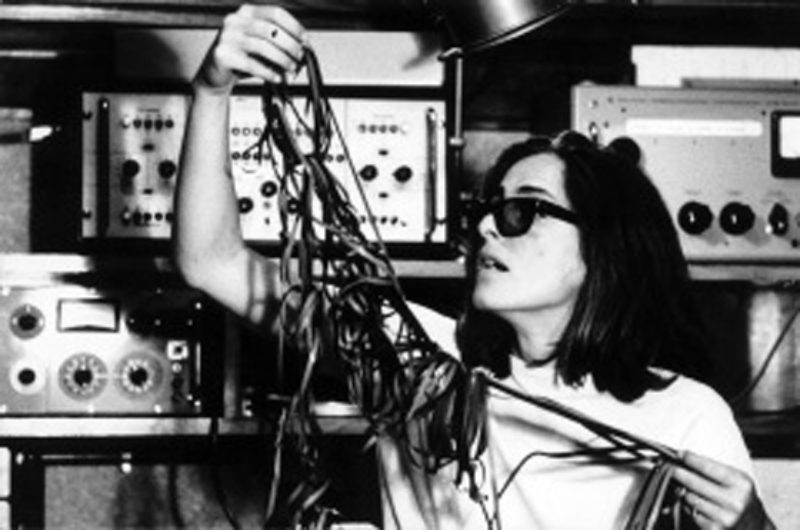Beatriz Ferreyra

The Ghent-based Inge van den Kroonenberg on her side is a true hearted sonic explorer herself. She followed in a way a parallel path in her own work, and Ferreyra’s appearance on the KRAAK Festival 2017 inspired her to this free-form haiku.
Beatriz Ferreyra is an Argentine composer who moved to Paris in the 1960s. Her ambitions to study at the Beaux Arts and become a painter took a turn when she was invited to the ‘Concert Collectif de Schaeffer’. It was then that she discovered the unusual and wondrous sounds of electroacoustic music and she decided to become a composer. She learned the skills of cutting tape and recording from Argentinian composer Edgardo Canton. In 1963 she followed a Schaefferian crash course by the man himself who told her she had a very good ear for electroacoustic music. She got to work as an assistant in his studio working on his book ‘Le Traité des Objets Musicaux’, which is regarded as Schaeffers most important work on music and its relation with technology, suggesting a methodology of working with sounds resulting from the recording process. After the book Ferreyra also collaborated on the realisation of the ‘Solfège de L’Object Sonore Album’ which was designed to accompany the book.
Within the GRM (Groupe de Recherches Musicales) she was part of the group called Solfège headed by sound sculpture pioneer Bernard Baschet. Solfège is a discipline of listening to the different characteristics of sound: their morphology and their typology. This approach formed the foundation for her work as a composer. In 1970 she left the GRM and built her own studio with three tape recorders, a mixer and a little synthesizer. She dragged her equipment and microphones to the stairwell of her apartment on the twelfth floor to get a good reverb. This experimental approach would become typical for her work. In 1975 she joined the Composers College of the IMEB (Institut international de musique électroacoustique de Bourges) and a year later she was requested by the Dartmouth College in Electronic Music to work with computers. She created the experimental concerts series ‘Les rendez-vous de la Musique concrète’ at the Centre d’études et Recherche Pierre Schaeffer between 1998 and 1999.

The relation between sounds is the major point in Ferreray’s work. Whether she works with tape or computer, her working methods remain the same. The process is the underlying binding factor. Technology is a way to compose, she explains. Cutting, mixing, transformation and silence. Those are the four major articulations that form the basis for her compositions that take root in sensations, perceptions, feelings and in an individual musical vision both colourful and structured. In ‘Echos’ (1978) for example she deconstructs popular Latin-american songs into a mesmerizing landscape of acapella vocals and in one of her more recent works ‘Les Larmes de L’inconnu’ (2011) she guides the listener through her dense universe of sound, where skillfully shaped noises reveal the mastership of a devoted and curious composer. Her vast oeuvre of works offer the listener an adventurous voyage into sound, exploring aural perception not only as a field of research but also as an abundant experience where possible forms of music seem on the verge of becoming.